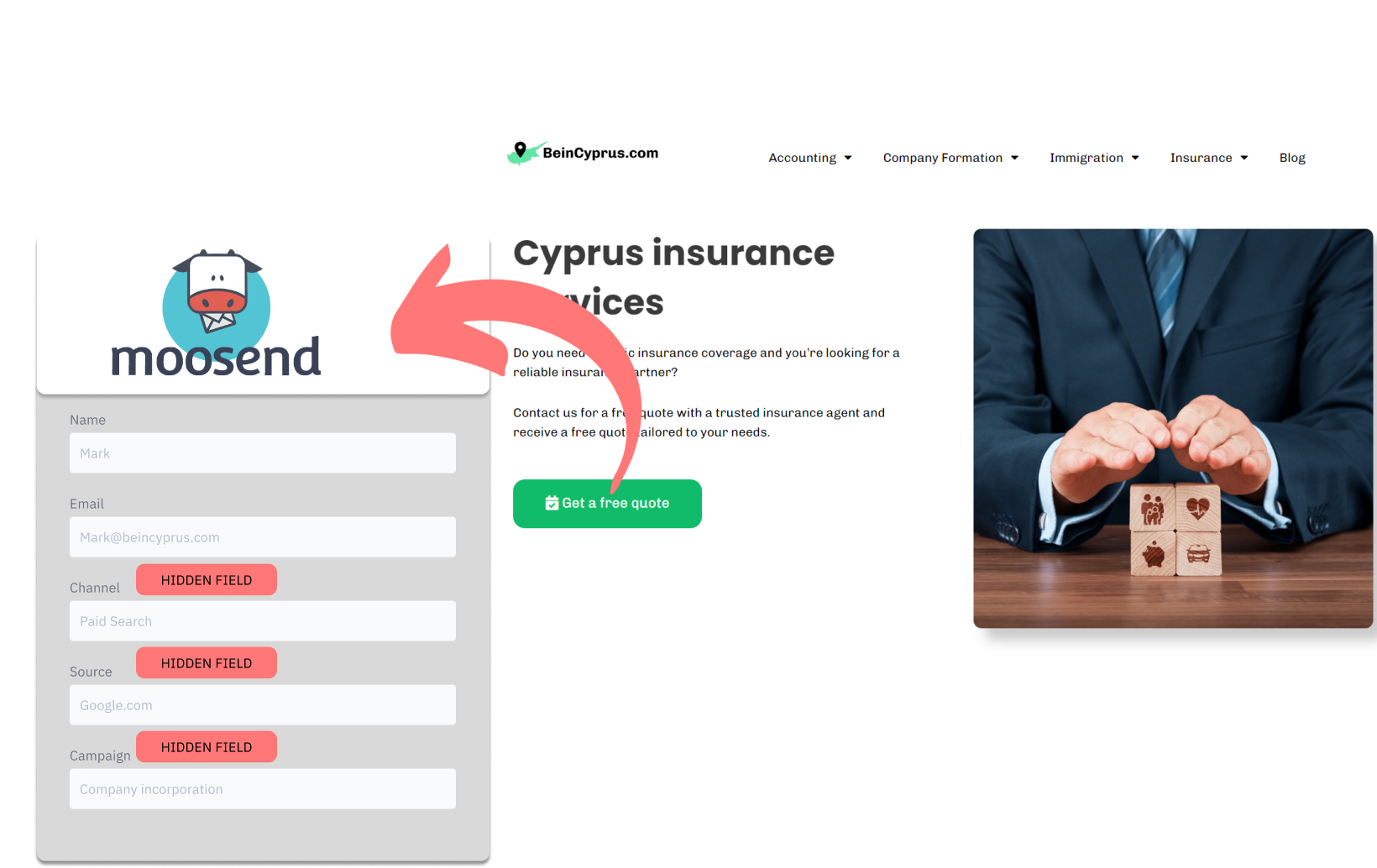Is Moosend helping you generate leads, but you can’t identify where they originate?
With this method, you can easily track the source of your leads in Moosend.
By looking at this data, you can shift your marketing focus to the sources that result in the most leads, sales, and revenue.
Let’s get started!
How to track the source of lead in Moosend
1. How LeadSources tracks the source of your leads?
Leadsources is a reliable tool that monitors the source of your leads. Once added to your website, it tracks up to 7 lead source data for each lead you generate.
Leadsources uses cookies and UTM parameters to capture information about visitors whenever they visit your site.
It acquires key lead source insights, including channel, source, campaign, keyword, and content, along with the landing page and subfolder.
Upon submission of a form, the lead’s contact information (such as name and email) and the source data gathered by Leadsources (including channel and source) are transmitted to Moosend.
2. How to track the source of your leads in Moosend
Follow these 3 steps:
- To get started, sign up at Leadsources.io.
- To track your leads, insert the Leadsources tracking code in the head section of your website by following this guide.
- To enhance your Moosend forms, add hidden fields. Our step-by-step guide will provide you with the necessary instructions.
You are all set to track lead sources effectively in Moosend 🎯
You can find this data in your submission records, along with the lead’s personal information, such as their name and email.
With this method, you can monitor lead sources for the following data at the lead level:
- Channel
- Source
- Campaign
- Term
- Content
- Landing Page
- Landing Page Subfolder
This data will be present in your Moosend submission records, along with the lead’s personal information, like name and email.
How to analyze the lead source data
What data is tracked in Moosend?
Leadsources tracks 7 categories of lead source data for every lead:
| Lead source data | Definition |
| Channel | Your traffic is categorized by Leadsources into 10 channels: Paid Search, Organic Search, Email Campaigns, Paid Social, Organic Social, Referrals, Direct Traffic, Affiliates, Display Ads, and Other. |
| Source | This process identifies the precise source or platform that attracted visitors to your site. For example, within the “Organic Social” channel, sources could include TikTok, LinkedIn, etc. |
| Campaign | Refers to the specific label of the marketing campaign. This is especially beneficial when you are executing multiple campaigns, making it easier to identify which campaign is driving your leads. |
| Term | Points out the specific keyword that the campaign is aimed at. For example, in a Google Ads campaign called “Search campaign for health insurance,” Leadsources classifies your leads based on keywords like “Health insurance in New York,” “Health insurance in Miami,” etc. |
| Content | Emphasizes the specific aspect of your ad that captured the audience’s attention. |
| Landing Page | The starting URL where the lead landed, such as domain.com/services/house-insurance-miami. |
| Landing Page Subfolder | Details the particular subfolder of the landing page URL for more precise tracking purposes. For example, if a lead lands on domain.com/services/house-insurance-miami, “services” is the subfolder that is monitored. |
Creating your first performance reports
1. Leads source reports
Optimize your marketing performance with a careful analysis of lead source data.

Start by segmenting your leads by channel (Search Paid, Email Marketing, etc.) to determine which channels are the most effective at capturing leads.

Afterward, analyze your leads by campaign in focused channels, such as Paid Search (Google Ads), to uncover the most efficient lead acquisition campaign.

To evaluate the impact of a campaign, create comprehensive reports, including “Volume of leads by keyword” and “Volume of leads by advertisement.” For example, an American law firm can gain key insights from a report that details:
2. Sales source reports
You now understand which channels, campaigns, and keywords are most successful in generating leads. However, it is vital to determine if these leads contribute to revenue growth.
A CRM can help you manage leads generated from Moosend, enabling you to determine which leads converted into paying customers and generate sales reports by channel, source, landing page, and more.
If you haven’t yet implemented a CRM, think about trying out GoHighLevel’s free trial.
Imagine the following example:
| Channels | Search Paid (Google Ads) | Social Paid (Facebook Business) |
| Leads | 50 | 75 |
| Sales | 5 | 6 |
| Average order value | $150 | $100 |
| Revenue | $750 | $600 |
Analyzing the “Leads by Channel” report from your Google and Facebook ad campaigns reveals that Paid Social ads led to more leads than Paid Search ads.
After examining the leads that successfully converted, it was determined that Paid Search yielded higher revenue, even though it produced fewer leads. Consequently, we reallocated the advertising budget to emphasize Paid Search.

